-
 Bitcoin
Bitcoin $106,754.6083
1.33% -
 Ethereum
Ethereum $2,625.8249
3.80% -
 Tether USDt
Tether USDt $1.0001
-0.03% -
 XRP
XRP $2.1891
1.67% -
 BNB
BNB $654.5220
0.66% -
 Solana
Solana $156.9428
7.28% -
 USDC
USDC $0.9998
0.00% -
 Dogecoin
Dogecoin $0.1780
1.14% -
 TRON
TRON $0.2706
-0.16% -
 Cardano
Cardano $0.6470
2.77% -
 Hyperliquid
Hyperliquid $44.6467
10.24% -
 Sui
Sui $3.1128
3.86% -
 Bitcoin Cash
Bitcoin Cash $455.7646
3.00% -
 Chainlink
Chainlink $13.6858
4.08% -
 UNUS SED LEO
UNUS SED LEO $9.2682
0.21% -
 Avalanche
Avalanche $19.7433
3.79% -
 Stellar
Stellar $0.2616
1.64% -
 Toncoin
Toncoin $3.0222
2.19% -
 Shiba Inu
Shiba Inu $0.0...01220
1.49% -
 Hedera
Hedera $0.1580
2.75% -
 Litecoin
Litecoin $87.4964
2.29% -
 Polkadot
Polkadot $3.8958
3.05% -
 Ethena USDe
Ethena USDe $1.0000
-0.04% -
 Monero
Monero $317.2263
0.26% -
 Bitget Token
Bitget Token $4.5985
1.68% -
 Dai
Dai $0.9999
0.00% -
 Pepe
Pepe $0.0...01140
2.44% -
 Uniswap
Uniswap $7.6065
5.29% -
 Pi
Pi $0.6042
-2.00% -
 Aave
Aave $289.6343
6.02%
Daily limit orders dropped sharply: signal that the main force is going to run away?
A sharp drop in daily limit orders across major crypto exchanges has traders questioning if "whales" are preparing to exit, though the decline may also stem from market maker adjustments, exchange events, or manipulation tactics.
Jun 13, 2025 at 11:07 pm
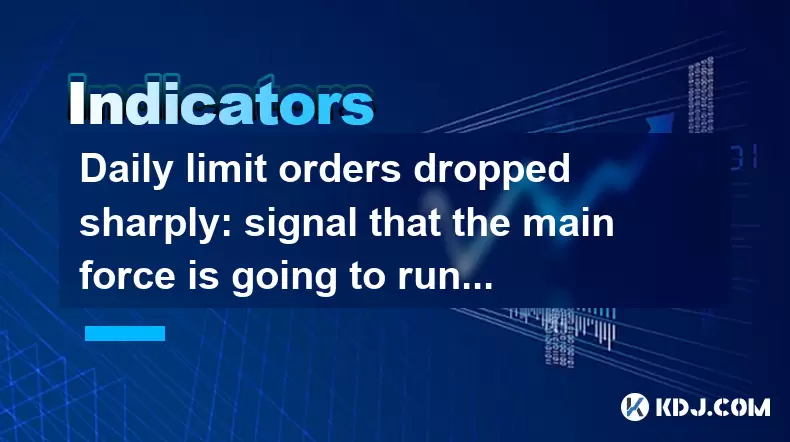
Understanding the Drop in Daily Limit Orders
A sharp decline in daily limit orders on major cryptocurrency exchanges has triggered concern among traders and analysts. This phenomenon refers to a sudden reduction in the number of pending buy or sell orders placed at specific price points, which are crucial for measuring market depth and liquidity. The drop can be observed across multiple trading pairs involving BTC, ETH, and altcoins.
The key question is: does this drop indicate that institutional players or large holders (commonly referred to as "whales") are preparing to exit the market?
Daily limit orders are often used by professional traders to accumulate or distribute assets without causing immediate price slippage.
What Causes a Sudden Decline in Limit Orders?
There are several technical and behavioral reasons behind the rapid disappearance of limit orders:
- Market maker activity adjustments: Automated trading bots may pull out orders during periods of high volatility to avoid being filled at unfavorable prices.
- Exchange-specific events: Technical upgrades, API changes, or maintenance activities can cause temporary order cancellations.
- Manipulation tactics: Large traders sometimes remove significant order volumes to create artificial support or resistance levels, misleading retail investors.
In many cases, a single factor isn't responsible — rather, it's a combination of these elements that leads to a visible decrease in open limit orders.
It’s important not to jump to conclusions based solely on order book data, as it doesn’t always reflect real-time intent.
Analyzing Order Book Depth and Its Implications
Order book depth shows how much buying or selling pressure exists at various price levels. A shallow order book after a drop in daily limit orders could suggest:
- Reduced confidence among market participants
- Potential short-term price instability
- Increased risk of pump-and-dump or wash trading scenarios
Traders often use tools like depth charts and liquidity heatmaps to visualize this data. These tools help identify whether the drop is concentrated in one direction (e.g., only buy orders disappearing) or evenly spread.
A thinning buy wall may precede a downward price movement, especially if sell pressure remains constant or increases.
How to Interpret This Trend from a Trading Perspective
For active traders, understanding the implications of reduced limit order volume involves checking multiple data sources:
- Compare current order book metrics with historical averages
- Monitor on-chain data such as large transfers and exchange inflows/outflows
- Track sentiment indicators like Google Trends, social media buzz, and derivatives funding rates
One approach includes setting up alerts via platforms like Glassnode, CoinGecko Pro, or TradingView to detect abnormal patterns in order flow or liquidity concentration.
Combining order book analytics with broader market signals provides a more accurate picture than relying on a single metric alone.
Steps to Verify Whether Big Players Are Exiting
If you're concerned about the possibility of large entities exiting positions, consider the following steps:
- Check whale transaction logs: Tools like Etherscan or blockchain explorers for specific coins can show unusually large transfers.
- Analyze exchange balances: Use platforms like CryptoQuant to track whether whales are moving funds to exchanges, a sign of potential selling.
- Review perpetual futures funding rates: Sharp drops in funding rates may signal decreased bullish leverage, suggesting profit-taking or bearish positioning.
- Monitor options open interest: A sudden decline in open interest might imply that big players are closing their positions ahead of major events.
Each of these steps helps build a clearer narrative around the behavior of institutional or high-net-worth individuals in the crypto space.
Cross-referencing off-chain and on-chain signals is essential to avoid false positives when interpreting market moves.
Frequently Asked Questions
Q: Can a drop in daily limit orders always be interpreted as negative for the market?
Not necessarily. Sometimes, order books get cleaned due to natural market cycles or algorithmic rebalancing. It depends on the context and other supporting indicators.
Q: How can I distinguish between normal market behavior and manipulation through order removal?
Look for unusual patterns like rapid re-appearance of orders at different price levels, extreme spikes in trade volume without corresponding price movement, or frequent wash trades.
Q: What tools are best suited for tracking real-time changes in limit orders?
Platforms like Bybt, Kaiko, and The Block offer advanced order book analytics. Exchange-native APIs also provide granular data for custom monitoring.
Q: Should retail traders react immediately to drops in limit orders?
Retail traders should avoid knee-jerk reactions. Instead, use such data as part of a broader strategy that includes risk management and multi-indicator analysis.
Disclaimer:info@kdj.com
The information provided is not trading advice. kdj.com does not assume any responsibility for any investments made based on the information provided in this article. Cryptocurrencies are highly volatile and it is highly recommended that you invest with caution after thorough research!
If you believe that the content used on this website infringes your copyright, please contact us immediately (info@kdj.com) and we will delete it promptly.
- 2025-W Uncirculated American Gold Eagle and Dr. Vera Rubin Quarter Mark New Products
- 2025-06-13 06:25:13
- Ruvi AI (RVU) Leverages Blockchain and Artificial Intelligence to Disrupt Marketing, Entertainment, and Finance
- 2025-06-13 07:05:12
- H100 Group AB Raises 101 Million SEK (Approximately $10.6 Million) to Bolster Bitcoin Reserves
- 2025-06-13 06:25:13
- Galaxy Digital CEO Mike Novogratz Says Bitcoin Will Replace Gold and Go to $1,000,000
- 2025-06-13 06:45:13
- Trust Wallet Token (TWT) Price Drops 5.7% as RWA Integration Plans Ignite Excitement
- 2025-06-13 06:45:13
- Ethereum (ETH) Is in the Second Phase of a Three-Stage Market Cycle
- 2025-06-13 07:25:13
Related knowledge

How to set the stop profit point after the high-level propeller pattern?
Jun 16,2025 at 08:04pm
Understanding the High-Level Propeller PatternThe high-level propeller pattern is a technical analysis formation often observed in cryptocurrency trading charts. It typically appears at significant price peaks and signals potential reversals. The pattern consists of a large candlestick with long upper and lower shadows, resembling a propeller, indicatin...
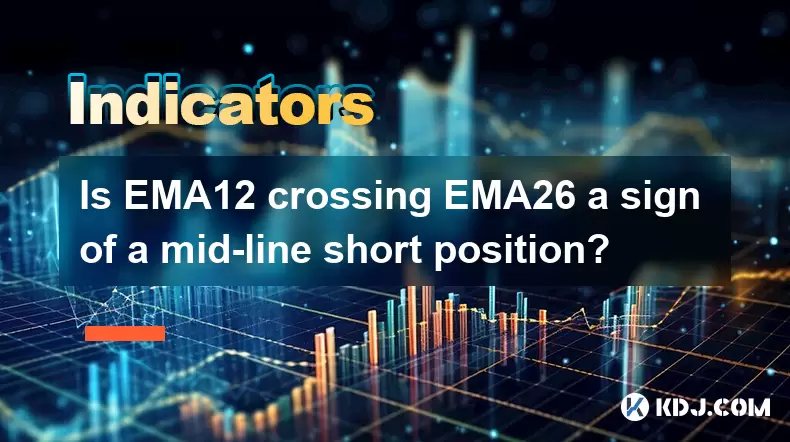
Is EMA12 crossing EMA26 a sign of a mid-line short position?
Jun 16,2025 at 07:22pm
Understanding EMA12 and EMA26 in Cryptocurrency TradingIn the world of cryptocurrency trading, Exponential Moving Averages (EMAs) are widely used tools for analyzing price trends. Specifically, the EMA12 and EMA26 are two of the most commonly referenced EMAs among traders. The EMA12 represents a short-term moving average calculated over the past 12 time...
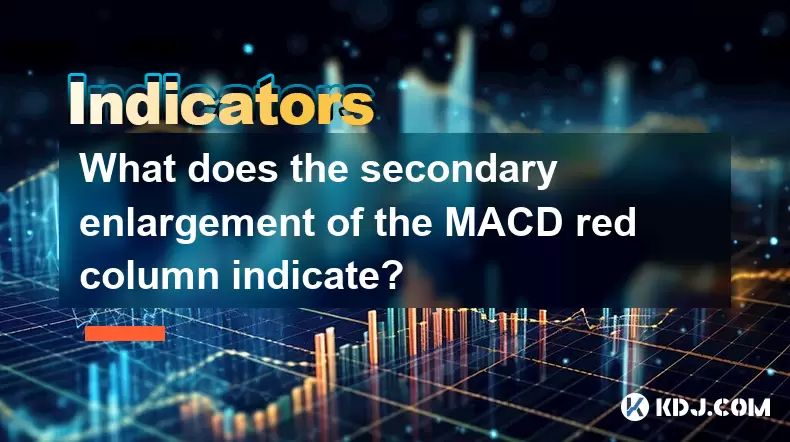
What does the secondary enlargement of the MACD red column indicate?
Jun 16,2025 at 07:49pm
Understanding the MACD Indicator and Its ComponentsThe Moving Average Convergence Divergence (MACD) is a widely used technical analysis tool in cryptocurrency trading. It consists of three main components: the MACD line, the signal line, and the MACD histogram. The histogram, represented as red or green bars, reflects the difference between the MACD lin...
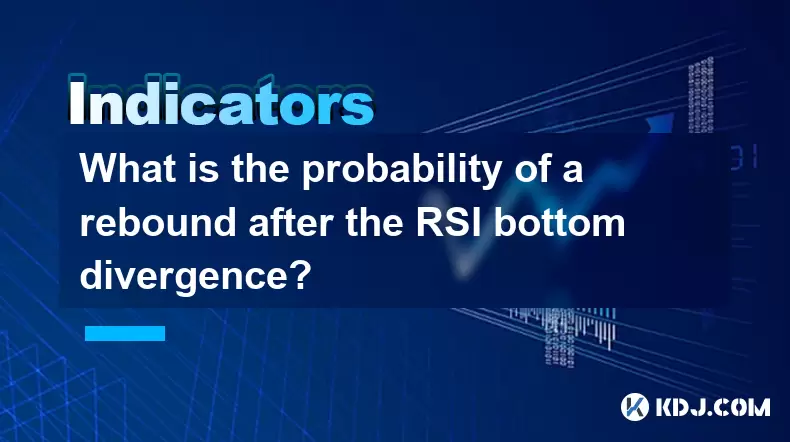
What is the probability of a rebound after the RSI bottom divergence?
Jun 16,2025 at 06:50pm
Understanding RSI Bottom Divergence in Cryptocurrency TradingThe Relative Strength Index (RSI) is a widely used momentum oscillator in technical analysis, particularly within the cryptocurrency market. It helps traders identify overbought or oversold conditions and potential reversal points. A bottom divergence occurs when the price of an asset makes a ...
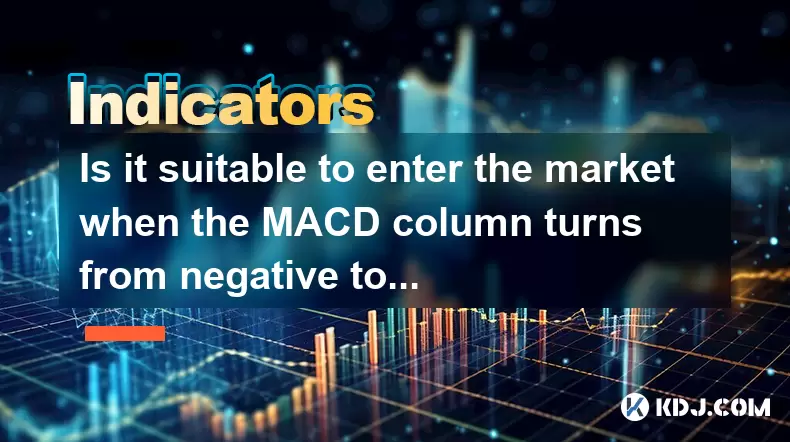
Is it suitable to enter the market when the MACD column turns from negative to positive?
Jun 16,2025 at 06:07pm
Understanding the MACD IndicatorThe Moving Average Convergence Divergence (MACD) is a widely used technical analysis tool in cryptocurrency trading. It consists of three main components: the MACD line, the signal line, and the MACD histogram (often referred to as the MACD column). The MACD line is calculated by subtracting the 26-period Exponential Movi...
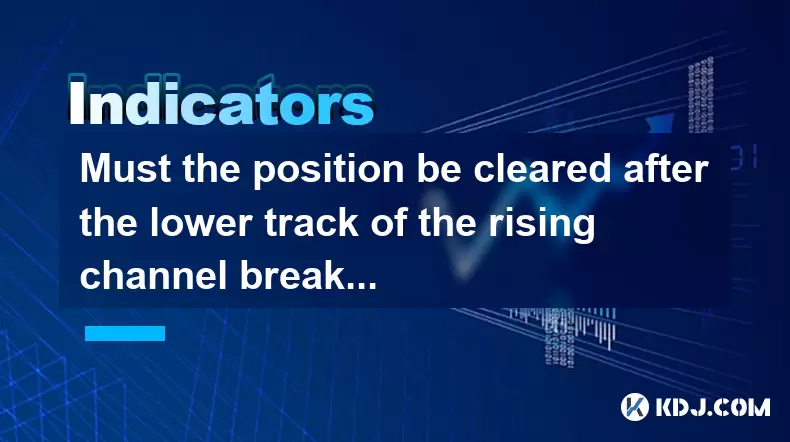
Must the position be cleared after the lower track of the rising channel breaks?
Jun 16,2025 at 04:43pm
Understanding the Rising Channel BreakdownIn technical analysis, a rising channel is formed by drawing two parallel trendlines: one connecting higher lows and another connecting higher highs. When the price breaks below the lower trendline of this channel, it signals a potential reversal or at least a pause in the uptrend. This event often triggers trad...

How to set the stop profit point after the high-level propeller pattern?
Jun 16,2025 at 08:04pm
Understanding the High-Level Propeller PatternThe high-level propeller pattern is a technical analysis formation often observed in cryptocurrency trading charts. It typically appears at significant price peaks and signals potential reversals. The pattern consists of a large candlestick with long upper and lower shadows, resembling a propeller, indicatin...

Is EMA12 crossing EMA26 a sign of a mid-line short position?
Jun 16,2025 at 07:22pm
Understanding EMA12 and EMA26 in Cryptocurrency TradingIn the world of cryptocurrency trading, Exponential Moving Averages (EMAs) are widely used tools for analyzing price trends. Specifically, the EMA12 and EMA26 are two of the most commonly referenced EMAs among traders. The EMA12 represents a short-term moving average calculated over the past 12 time...

What does the secondary enlargement of the MACD red column indicate?
Jun 16,2025 at 07:49pm
Understanding the MACD Indicator and Its ComponentsThe Moving Average Convergence Divergence (MACD) is a widely used technical analysis tool in cryptocurrency trading. It consists of three main components: the MACD line, the signal line, and the MACD histogram. The histogram, represented as red or green bars, reflects the difference between the MACD lin...

What is the probability of a rebound after the RSI bottom divergence?
Jun 16,2025 at 06:50pm
Understanding RSI Bottom Divergence in Cryptocurrency TradingThe Relative Strength Index (RSI) is a widely used momentum oscillator in technical analysis, particularly within the cryptocurrency market. It helps traders identify overbought or oversold conditions and potential reversal points. A bottom divergence occurs when the price of an asset makes a ...

Is it suitable to enter the market when the MACD column turns from negative to positive?
Jun 16,2025 at 06:07pm
Understanding the MACD IndicatorThe Moving Average Convergence Divergence (MACD) is a widely used technical analysis tool in cryptocurrency trading. It consists of three main components: the MACD line, the signal line, and the MACD histogram (often referred to as the MACD column). The MACD line is calculated by subtracting the 26-period Exponential Movi...

Must the position be cleared after the lower track of the rising channel breaks?
Jun 16,2025 at 04:43pm
Understanding the Rising Channel BreakdownIn technical analysis, a rising channel is formed by drawing two parallel trendlines: one connecting higher lows and another connecting higher highs. When the price breaks below the lower trendline of this channel, it signals a potential reversal or at least a pause in the uptrend. This event often triggers trad...
See all articles

























































































